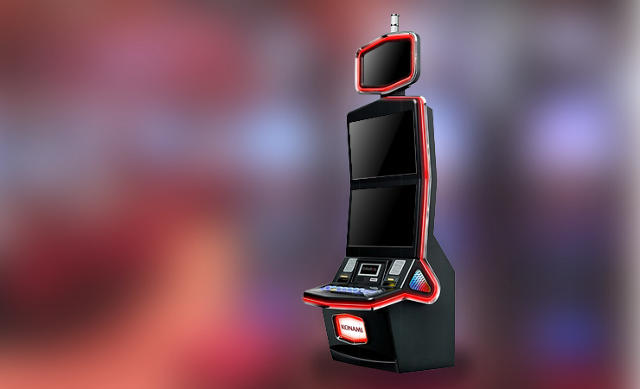Need A Winning Design For A Slot Machine? Look To The Health Care Industry
For the design of their latest machine, Konami Gaming turned to Karten Design, a firm that specializes in medical devices.
Unless you visit casinos regularly, the image of a slot machine that immediately comes to mind is likely still of the old model: the one where you yank a lever, cherries line up and coins spill out in the winning moment. But slot machines, like most things, have been digitized in the last decade. New technology has made way for more exciting, now interchangeable games and bigger payouts. These days slot machines alone account for about 85% of the gaming industry’s profits.
It would stand to reason, then, that gaming companies are putting concordant thought and effort into designing slot machines. Last month, Konami Gaming debuted its Concerto Video Slot Machine to over 25,000 gaming professionals in Las Vegas. For the design of the machine, Konami turned to Karten design, a leading product design firm that specializes in digital health.
In designing the machine, Stuart Karten found many parallels between designing for health care and designing for gaming. “Understanding the rules and regulations and parameters is something we’re used to. And of course we’re always trying to push the envelope within those constraints and bring something new and different,” says Karten.
If you dissect a slot machine, you’ll find three separate components: the game, the physical machine and the system. Typically, those parts are designed as three separate units with three separate functionality specifications, then puzzled together at the end.
“Traditionally what happens is there’s a device, and it doesn’t have any connection to the game, and the system is just sort of a bolted on box where you put the card,” says Karten. “Even though one company is responsible for [the game machine], it hadn’t been done in an integrated way. And that’s where we saw an opportunity for Konami.”

So Karten set out to think about designing the machine holistically. The gaming world, much like the medical industry, is full of regulations, so he knew he would be designing with some constraints. He also knew that designing health care devices or any product involved catching the users eye and then delivering a solid user experience—bait and hook.
“In gaming it’s called ‘Time On Device,'” says Karten. “They want you to come over, sit down and they want you to stay. When we’re designing medical health care solutions, particularly with digital health, that’s what we want to do. We want to motivate them to get engaged in the product, feel attracted to it and stay with it so they can reap the benefits of some sort of behavior change.”

For the Concerto, that meant designing a machine that was distinctive in an endless row of other loud, flashy, glitzy machines. Taking his cue from instantly recognizable car headlights (Audi, Tesla), Karten designed the machine’s profile to have a unique drip-down look. Holographic side lighting runs along the parameter of the machine and is programmed to interact uniquely with game, getting brighter as the action is heightened.
Then, of course, there’s the idea of comfort—a top consideration at the hospital bed but considerably less so in the gaming world. “Historically, slot machines didn’t really take into account that people were sitting in front of them for long expanses of time,” says Karten. The design of the Concerto allows for the keyboard to come out to give players more leg room. An immersive, widescreen entertainment experience keeps them engaged.
As for getting the consumer sticking around? “It’s really the games that hook people in,” says Karten. The rest is up to the casino gaming industry to do what they do best.
Fast Company , Read Full Story
(95)



